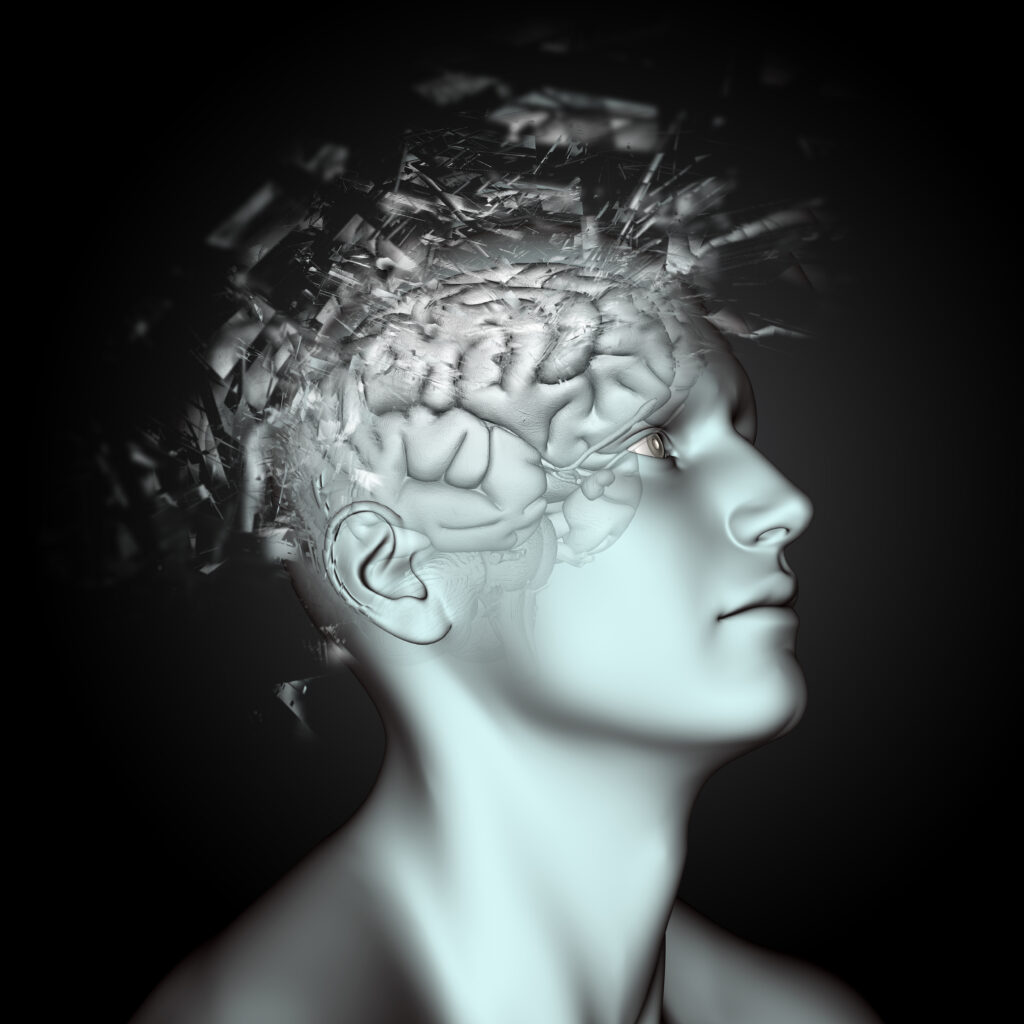Attention-deficit hyperactivity disorder (ADHD) is a mental disorder characterized by an inability to focus one’s attention to effectively complete one task or cognitive activity before proceeding to the next one. This leads to impulsive actions, typically a hyperkinetic behavior with an impulsive decision-making attitude. We are here to study the Effects of ADHD on The Brain.
- Definition of ADHD
ADHD is a specific condition of the brain that originates in and affects the brain in different ways. The brain regulates the body functions; including receiving sensory information, initiation, performance, and coordination of voluntary and involuntary movements, regulating moods and emotions, and behavioral control, among others. It also controls all physiological activities, assigning tasks to various areas. Thus it handles Information processing and executes its sharing across vast neural networks which is an essential part of normal brain functioning. This is done by neurotransmitters which conduct nervous stimuli across synapses to connect other neurons.
- Importance of Understanding Its Neurological Impact
ADHD has a greater neurological impact with abnormally low levels of the neurotransmitters that help transmit nerve impulses between the prefrontal cortical area and the basal ganglia, known as dopamine and nor adrenaline.
Dopamine is closely associated with concluded areas in the brain and also interacts with other neurotransmitters to maintain mood. Low dopamine levels drive the person to find the reward feeling from different sources.

Neurological Basis of ADHD
Attention deficit hyperactivity disorder is a type of neurological disorder called a neuro-developmental disorder. It not only affects your brain but also damages your nervous system, like all neurological disorders. But the most hazardous effect is, it also affects brain development. It is presumed to be present from birth. If left untreated, it harms your learning ability and blocks your achievement of developmental milestones. Thus, it can lead to a wide range of symptoms linked with inattention, hyperactivity, and impulsivity. In adulthood, it can cause difficulties with day-to-day functioning at home and at work.
In this article, we’ll find what the science says about the brain and ADHD.
Abnormalities in Neurotransmitters
Lower glutamate levels may be another reason for ADHD in adults, which could be responsible for the abnormalities in neurotransmitters. This causes dysfunctional neural networking in the frontal parts of the brain. The prefrontal part controls emotional responses, behavior, and judgment. This part of the brain is specialized for deciding on the appropriateness of different actions, and of course, fixing attention to the present task which enables you to execute routine tasks without deliberate and focused attention to each step of the task. It is the part that finalizes the plans, initiates actions as well as executes corrections with perfection, averting hindrances by alternative actions, and enabling attention to fixing the task at hand. The basal ganglia stimulate impulsive behavior to prevent uncertain automatic responses to stimuli.
Prefrontal Cortex Dysfunction
Dysfunction of the prefrontal cortex causes a lack of alertness, decreased efficiency of working, short-term memory, shortened attention span, difficulty in initiating and sustaining activities, and inability to distinguish unnecessary or distracting activities. This is why ADHD individuals have lost focus. Moreover, there is a significant difficulty in organizing the brain for performing any activity that requires strong planning of more than one phase. These problems originate due to improper behavior which is strongly guided by impulsivity and the experienced difficulty in being still.
Some important Structural abnormalities found in the brains of ADHD patients, including, low density of gray matter, abnormalities in the structure of the white matter, and reduced cortical thickness in adults specialized for focusing attention.
Functional Neuroimaging Findings
As we discussed, frontal and parietal networks work in collaboration to regulate the execution of actions and attention, leading to hyperactivity and poor attention. Additionally, there are some visual and dorsal attention networks as well as the default mode network.
Neurodevelopmental Disorders

Neurodevelopmental disorder is a relatively new term. Neurodevelopmental disorders affect brain development in children and adults. It was revealed by the Institute of Neurology in the USA, that it is a category of diagnoses, many of which used to be called developmental disorders.
Like other neurological disorders, neurodevelopmental disorders also affect the structure or function of the brain or nervous system. This means that these disorders cause biological irregularities that can be seen in advanced imaging tests and can be treated with medications. This is important to understand that, for a long time, people considered the symptoms of ADHD to be behavioral or they might be fixed with good parenting or discipline. However recent research has shown that Irregularities in the brain cause behavioral issues, like trouble with impulsivity or emotional regulation. This disorder can also affect the way people interact with others, learn, think, or act.
All these conditions affect both the brain and behavior, therefore, individuals with neurodevelopmental conditions may be managed by a group of the following doctors:
- Neurologists
- Adolescent psychiatrists
- Adolescent psychologists
Structural and Functional Differences
Biological aspects of ADHD have progressed in recent years and research has concluded many important facts about the disorder. Researchers, now, can identify brain structures and measure their size by Using MRI images and CT scans, using fMRI technology. Research has made it easy to track activity in the brain and observe how the performance changes while someone performs different tasks.
Differences in Brain Structure
A 2020 study in the Journal of the American Institute of Neurology has shown that ADHD is associated with variations in several different parts of the brain. A group of individuals comprising children and adults has been used for an experiment to gather data on the brain’s structure and function. The team compared images gathered from 1,500 people with ADHD and more than 1,000 people without it.
The results were very spectacular, in people with ADHD, some regions of the brain are smaller than average. These areas include, such as the amygdala, sub-cortical structures deep within the center of the brain, and hippocampus. While it is obvious that these areas are specified for performing several roles in cognition, particularly in emotional regulation and memory. The results of the experiment proved that the differences between ADHD brains and non-ADHD brains were found in childhood. This supports the idea that children with ADHD experience a delay in the development of specific brain structures.
Other research has provided information about total brain volume and brain surface area. According to recent studies, individuals with ADHD appear to have a reduced total brain volume. In addition, some studies present a theory that a thinning in the outermost layer of the brain appears, called the cerebral cortex.
Functional Connectivity
Brain function is a combination of combined working of the many processes that are taking place within your brain at any specific time. fMRI technology is the latest technology to track activity in the brain while people perform different types of tasks, like decision-making, planning, and thinking. ADHD causes different types of impairments in the brain, particularly, impairments in working memory, attention, timing, and planning. Abnormalities in the areas of the brain involved in motivation and emotional control have also been observed. Researchers have noted differences in the reward-processing networks of the brain. They have found deficits in the regions of the brain linked with decision-making. On the other hand, more findings on this topic have been inconsistent, though.
So, what are the actual conclusions of these studies? The result is, that these changes in brain function and structure lead to many symptoms that people with ADHD experience.
Symptoms of ADHD
ADHD is primarily related to hyperactivity-impulsivity or a combination of both or inattention. Inattention is more common in older children and adolescents. While Hyperactivity-impulsivity is most common in young children. Popular symptoms of inattention are:
- Trouble in comprehending the details of activities
- Difficulty paying attention to a specific task
- Trouble in completing tasks
- Avoiding difficult activities
- Easily forgetting things
- Getting distracted
- Frequently losing important things of daily use
- Constantly shaking while seated
- Frequently needing to walk around
- Feeling restless
- Feeling difficulty in engaging in activities quietly
- Talking excessively
People with ADHD often fail to keep their personal spaces organized. ADHD symptoms are closely linked with abnormalities in the brain, but medications can help manage the effects.
Signs of ADHD in Adults
Signs and symptoms of ADHD often appear in childhood but sometimes these are overlooked or misinterpreted due to various reasons as long as the symptoms of ADHD present in an individual, for instance, up to 13 years of age, they still become more strong and more hazardous. In adults, they may appear different than those in adolescence or childhood due to the different circumstances and activities. According to the study, adults may experience:

- Problem at college or work
- Difficulty in passing classes or completing work
- Issues with overall mental well-being
- Substance abuse issues, especially with alcohol or nicotine
- Relationship issues with partners, family, or friends
- Accidents or injuries
Signs of ADHD in Children

Inattention, hyperactivity, and impulsivity are the major symptoms found in all age groups of people with ADHD. In addition, in severe cases, individuals with ADHD experience difficulties paying attention and staying organized, excess fidgeting or restlessness, and trouble with self-control or impulsive behaviors. In toddlers or young children, you may observe the following symptoms:
- Becoming easily distracted
- Trouble focusing on activities
- While playing or doing schoolwork feel difficulty paying attention
- Squirming, shaking, or feeling difficulty in sitting still
- Constantly moving or frequently running around
- Engaging in activities loudly or talking excessively
- Interrupting other people while working
ADHD Treatment
To lessen symptoms and improve overall functioning in daily life, ADHD should be treated permanently. Usually, this is processed through a combination of therapy, adaptive behaviors, and medication.
Therapy
Individuals with ADHD can thrive in their daily lives through therapy. Talk therapy is used to help them develop coping skills that help them control their emotions, and manage problem behaviors. Different therapeutic strategies for ADHD include:
- Behavioral Therapy: Cognitive behavioral therapy can help people with the behaviors that shape their daily lives, their thoughts, and feelings as well.
- Family Therapy: symptoms of ADHD affect various relationships and family life. Therefore, family therapy, also known as marriage therapy, is considered as the best therapy for adults with ADHD. The therapy can improve the thoughts and lessen the symptoms.
- Parent Training: Parent training can help their children improve not only their behaviors but also their self-esteem, through cognitive behavioral techniques. Therefore, teaching parents of children with ADHD how to manage such types of children may be helpful.
Adaptive Behaviors
Changing problematic behavior strategies can help improve the day-to-day quality of life for individuals with ADHD. This means identifying parts of your daily routine activities, or unhealthy tendencies that may adversely affect your ADHD symptoms or impede treatment.
In children, this may be achieved by developing new habits that can be performed at school or home. This may include receiving personalized academic accommodations at school. Adults can involve this therapy in their lives by attending support groups to receive support and advice from peers living with ADHD.
Medication
The best way to lower the chronic symptoms of ADHD is proper medications. Medicines can greatly improve everyday functioning and overall quality of life. Stimulants and non-stimulants are the two most effective groups of medicines for the treatment of ADHD symptoms.
- Stimulant Medications: They can help reduce the symptoms of ADHD by increasing levels of dopamine. They include options such as Adderall, Vyvanse, and Ritalin.
- Non-Stimulants Medications: They help improve the symptoms of ADHD, such as impulsivity and inattention and this can be achieved by changing the levels of certain neurotransmitters in the brain. These medicines include Strattera, Kapvay, and Intuniv.
Conclusion
ADHD affects the structure, developmental changes, and function of the brain. The worst is the interruption in the functioning of the brain. Recent studies have revealed that these physical changes in the brain can lead to many different symptoms of ADHD, such as increased hyperactivity and decreased attention. ADHD symptoms are commonly diagnosed in childhood, but they can impact people of all ages and genders.







